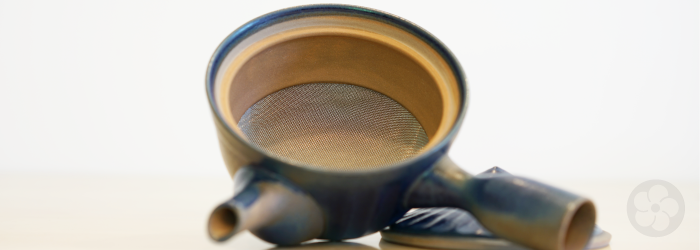What is a Kyusu Teapot?

Shopping for teapots can be daunting, with seemingly endless styles to choose from and few physical differences among them. Materials, finishings, and craftsmanship can all influence the flavor of tea in subtle ways, but most teaware is sold without mention of these practical details. Instead, exotic-sounding descriptors like kyusu are used to indicate features - but the application of this term, in particular, can be inconsistent. So what does the term kyusu mean, exactly?
Find our guide to picking the perfect pot for your favorite tea >>
In fact, kyusu is an extremely general term, simply meaning ‘teapot’ in Japanese. Worldwide, it is most commonly used to refer to the style of side-handled teapot that is popular in Japan, but these are more correctly called yokode no kyusu. In fact, many styles of teapot are made in Japan, and all are called kyusu, including pots with handles at the back or over the top.
Learn how to use a side-handled teapot with Alice in this video:
Yet the term kyusu can still be helpful in identifying practical features if we extend the definition to all teapots made in Japan. Thanks to the intense popularity of local tea styles, many teapots made there will share several characteristics that make them ideal for brewing the small leaf pieces of steamed green teas. Though there are certainly exceptions to these rules, here are a few generalizations that can help define the features of a kyusu.
Learn more about the difference between Chinese & Japanese green teas >>
1. Fine filtering for small leaf pieces
Most kyusu are equipped with some manner of fine mesh strainer, perfect for filtering the small pieces of chopped green tea leaves. Since most Japanese teas are cut from the plant, rather than plucked by hand, small leaf pieces are common even in high quality examples. While some kyusu include removable metal mesh baskets, others contain a more permanent filtering fixture that allows for more circulation of brewing leaves.
2. Aesthetic decoration for attractive presentation
It may be no surprise that the tea culture that developed the formal Japanese tea ceremony puts particular value on aesthetics. While Chinese-made pots are more likely to be either functionally minimal or purely decorative, kyusu often feature cute paintings or colorful details on pots that are primarily practical. In fact, even the common side-handle style is designed for the aesthetics of presentation, so that the server can display a smooth pour to their guests from across the table.
How to tell the difference between functional and decorative teapots >>
3. Glazed or high-fired to maximize aroma
Japanese green teas are highly prized for their rich umami flavors and bright, savory aromas. Unlike the heavily roasted flavor notes popular in some regions of China, these qualities are best accentuated by non-porous brewing vessels, and most kyusu are coated inside and out with a thin coating of glassy glaze to achieve this quality. Unglazed teapots are also made in Japan, but these are typically fired at such high temperatures that the clay body itself becomes vitrified, or glass-like.
4. Large capacity to brew a small number of infusions
Chopped leaves and a lack of oxidation mean that Japanese green teas release flavor quickly, and don’t typically last for many infusions like large leaf, heavily oxidized styles from China. To create plenty of tea in only two or three infusions, most kyusu are larger in volume than traditional Chinese teapots. This makes them particularly popular among western tea drinkers, since they are easily used for brewing English-style black teas and other quick-brewing leaves.
Shop our selection of Japanese-made kyusu >>
Ultimately, kyusu come in all shapes and sizes, with a wide variety of details that make them perfect for brewing many different styles of tea. As ever, we recommend paying attention to practical measures of usability like the balance, pour, and material of a pot over all else.
Do you own a kyusu? What are your favorite features? Let us know what you think in the comments below!
Sign up for our newsletter to get blog updates in your inbox!





Comments on this post (0)